Eighteenth-century Tibetan pilgrimage and survival of Buddhism in India according to the Third Panchen Lama
Buddhist and Hindu images in the Bhot Mandir, ca. 1890
.
Bhot. Mahant Trilokh Chandra Giri, ca. 1928
Bhot. Bagan, Howrah, ca. 1928
Bhot Bagan, Howrah, 2005
.
ix
- Image of Tara alias Mahakal from Bhot Bagan, 2005
- .
- Nineteenth-century Tibetan pilgrimage in the Punjab
- Nalanda stupa site no. 3 prior to excavation, 191718
Nalanda stupa site no. 3 after excavation, 192829
Parklike setting of restored Mahabodhi Temple, Bodh Gaya, 1903
Dharmapala and Shaku Kozen, Bodh Gaya, 1891
Thirteenth Dalai Lama (centre, wearing spectacles) with Kaniska
.
reliquary, Indian Museum, Calcutta, 1910
Maha Bodhi Society pilgrims certificate presented to Frederick Oertel by Anagarika Dharmapala, 1904
Inaugural procession of Buddha relics at the Mulagandhakut. Vihara, Sarnath, 1931
Tibetan pilgrimage itineraries in India, 190545
Tibetan pilgrims impression of the Indian railway and foreigners, early twentieth century
Amdo Gendun Chophels map of Indian Buddhist sites
and the railway networ k .
Amdo Gendun Chophels sketch map of Rajagrha, 1939
- Tibetan sketch map of the holy mountain of Tsari Dakpa Shelri, early twentieth century
- Fourteenth Dalai Lama holding Buddha relics with a Maha Bodhi Society monk (standing left of Dalai Lama with glasses), Chumbi Valley, 1951
Fourteenth Dalai Lamas first ritual at Bodh Gaya, 1956
Fourteenth Dalai Lama presenting Xuanzangs relics to Jawaharlal Nehru, Nalanda, 1956
Tibetan refugee settlements in South Asia
G
acknowledgments
 his book had a long, slow gestation, and its birth owes a lot to many different people. While I have more recently envisaged it as a com panion volume to my earlier monograph on Tibetan religion, The Cult of Pure Crystal Mountain (New York, Oxford University Press, 1999), which also deals with place creation and the ritual culture of pilgrimage in Ti betan societies, this has admittedly been something of an afterthought. The roots of The Holy Land Reborn actually reach all the way back to my undergraduate days. I have fond memories of studying India with Jim Wil son, whose enthusiasm and generosity as a teacher helped determine my long-term fascination with some of the dimensions of religion in India that are treated here. Nor have I forgotten how, during my early days as Jims student, I serendipitously came across a book by August Hermann Francke (18701930) in the university library while daydreaming of Himalayan ad ventures instead of studying. With fascination, I read and copied Franckes notes on some of the reinvented Tibetan pilgrimage sites to which I have now devoted a chapter in this book. Francke was the fi rst professor to be awarded a chair of Tibetan studies at the Humboldt University in Berlin, and as fate would have it that is the post I now hold today. To my other early teacher, and friend, Paul Harrison, I will always be grateful for the inspiring glimpse into the higher levels of the academic study of Buddhism which he gave me. Although I chose to follow a different path, the interest in Buddhist studies which Paul once kindled seems to have fi nally found some expression in this book. I hope it gives him more satisfaction than regret! I thank Paul as well for introducing me to Gregory Schopen, and also to his scholarship, which as a nonphilologist I nevertheless came to appreciate for its counterintuitive approach.
his book had a long, slow gestation, and its birth owes a lot to many different people. While I have more recently envisaged it as a com panion volume to my earlier monograph on Tibetan religion, The Cult of Pure Crystal Mountain (New York, Oxford University Press, 1999), which also deals with place creation and the ritual culture of pilgrimage in Ti betan societies, this has admittedly been something of an afterthought. The roots of The Holy Land Reborn actually reach all the way back to my undergraduate days. I have fond memories of studying India with Jim Wil son, whose enthusiasm and generosity as a teacher helped determine my long-term fascination with some of the dimensions of religion in India that are treated here. Nor have I forgotten how, during my early days as Jims student, I serendipitously came across a book by August Hermann Francke (18701930) in the university library while daydreaming of Himalayan ad ventures instead of studying. With fascination, I read and copied Franckes notes on some of the reinvented Tibetan pilgrimage sites to which I have now devoted a chapter in this book. Francke was the fi rst professor to be awarded a chair of Tibetan studies at the Humboldt University in Berlin, and as fate would have it that is the post I now hold today. To my other early teacher, and friend, Paul Harrison, I will always be grateful for the inspiring glimpse into the higher levels of the academic study of Buddhism which he gave me. Although I chose to follow a different path, the interest in Buddhist studies which Paul once kindled seems to have fi nally found some expression in this book. I hope it gives him more satisfaction than regret! I thank Paul as well for introducing me to Gregory Schopen, and also to his scholarship, which as a nonphilologist I nevertheless came to appreciate for its counterintuitive approach.
xi
acknowledgments
During a long period of research and writing, I benefited much from the kind and generous assistance, constructive criticism, and inspiration of various friends, colleagues, and informants. I thank them all here sim ply in alphabetical order, with apologies to those I may have inadvertently overlooked. First, I would like to offer my sincere gratitude to my many Ti betan informants living in South Asia, Tibet, and Europe over the past few decades. Thanks also to John Ardussi, Anthony Aris, Michael Aris, Dandi Swamin Prakash Ashram, Christopher Atwood, Michael Balk, Heinz Bechert, Duncan Campbell, Di Cousens, Soumitra Das, Simon Digby, Den nis Dutton, Isrun Engelhardt, Elizabeth English, Bernard Faure, Gunther Gronbold, Sudeshna Guha, Tsering Gyalbo, Peter Hansen, Paul Harrison, Jens-Uwe Hartmann, Hanna Havnevik, Jeffrey Hopkins, David Jackson, Matthew Kapstein, Per Kvrne, Donald Lopez Jr., Alexander Macdonald, Alex McKay, Dan Martin, Irmgard Mengele, Jon Meisler, Paul Morris, Vishvajit Pandya, Jampa Panglung, Heinz Rather, Bo Sax, Gene Smith, Poul Pedersen, Burkhard Quessel, Nicholas and Deki Rhodes, Nyaken Riba, Aditi Nath Sarkar, Gregory Schopen, Mona Schrempf, Peter Schwieger, Lobsang Shastri, Jan Sobisch, Elliot Sperling, Heather Stoddard, Axel Strom, Kate Teltscher, David Templeman and family, Ngawang Thogme, Alan Trevithick, Tashi Tsering, Helga Uebach, Steven Weinberger, David White, and Monika Zin.

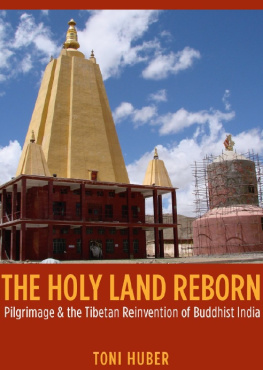

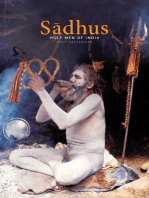
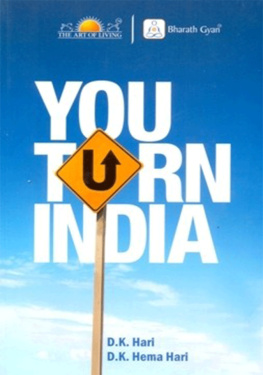

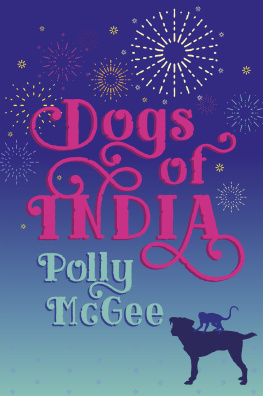


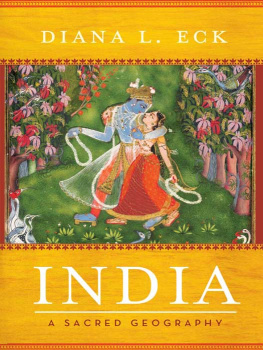
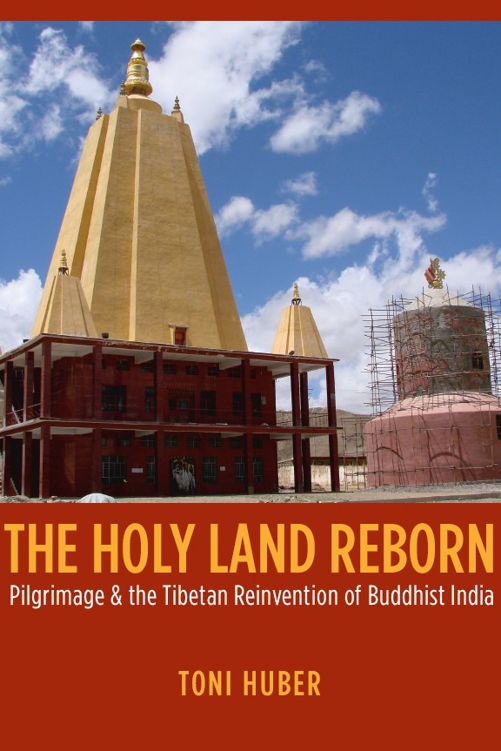
 The paper used in this publication meets the minimum requirements of the American National Standard for Information SciencesCPermanence of Paper for Printed Library Materials, ansi z39.481992.
The paper used in this publication meets the minimum requirements of the American National Standard for Information SciencesCPermanence of Paper for Printed Library Materials, ansi z39.481992. his book had a long, slow gestation, and its birth owes a lot to many different people. While I have more recently envisaged it as a com panion volume to my earlier monograph on Tibetan religion, The Cult of Pure Crystal Mountain (New York, Oxford University Press, 1999), which also deals with place creation and the ritual culture of pilgrimage in Ti betan societies, this has admittedly been something of an afterthought. The roots of The Holy Land Reborn actually reach all the way back to my undergraduate days. I have fond memories of studying India with Jim Wil son, whose enthusiasm and generosity as a teacher helped determine my long-term fascination with some of the dimensions of religion in India that are treated here. Nor have I forgotten how, during my early days as Jims student, I serendipitously came across a book by August Hermann Francke (18701930) in the university library while daydreaming of Himalayan ad ventures instead of studying. With fascination, I read and copied Franckes notes on some of the reinvented Tibetan pilgrimage sites to which I have now devoted a chapter in this book. Francke was the fi rst professor to be awarded a chair of Tibetan studies at the Humboldt University in Berlin, and as fate would have it that is the post I now hold today. To my other early teacher, and friend, Paul Harrison, I will always be grateful for the inspiring glimpse into the higher levels of the academic study of Buddhism which he gave me. Although I chose to follow a different path, the interest in Buddhist studies which Paul once kindled seems to have fi nally found some expression in this book. I hope it gives him more satisfaction than regret! I thank Paul as well for introducing me to Gregory Schopen, and also to his scholarship, which as a nonphilologist I nevertheless came to appreciate for its counterintuitive approach.
his book had a long, slow gestation, and its birth owes a lot to many different people. While I have more recently envisaged it as a com panion volume to my earlier monograph on Tibetan religion, The Cult of Pure Crystal Mountain (New York, Oxford University Press, 1999), which also deals with place creation and the ritual culture of pilgrimage in Ti betan societies, this has admittedly been something of an afterthought. The roots of The Holy Land Reborn actually reach all the way back to my undergraduate days. I have fond memories of studying India with Jim Wil son, whose enthusiasm and generosity as a teacher helped determine my long-term fascination with some of the dimensions of religion in India that are treated here. Nor have I forgotten how, during my early days as Jims student, I serendipitously came across a book by August Hermann Francke (18701930) in the university library while daydreaming of Himalayan ad ventures instead of studying. With fascination, I read and copied Franckes notes on some of the reinvented Tibetan pilgrimage sites to which I have now devoted a chapter in this book. Francke was the fi rst professor to be awarded a chair of Tibetan studies at the Humboldt University in Berlin, and as fate would have it that is the post I now hold today. To my other early teacher, and friend, Paul Harrison, I will always be grateful for the inspiring glimpse into the higher levels of the academic study of Buddhism which he gave me. Although I chose to follow a different path, the interest in Buddhist studies which Paul once kindled seems to have fi nally found some expression in this book. I hope it gives him more satisfaction than regret! I thank Paul as well for introducing me to Gregory Schopen, and also to his scholarship, which as a nonphilologist I nevertheless came to appreciate for its counterintuitive approach.